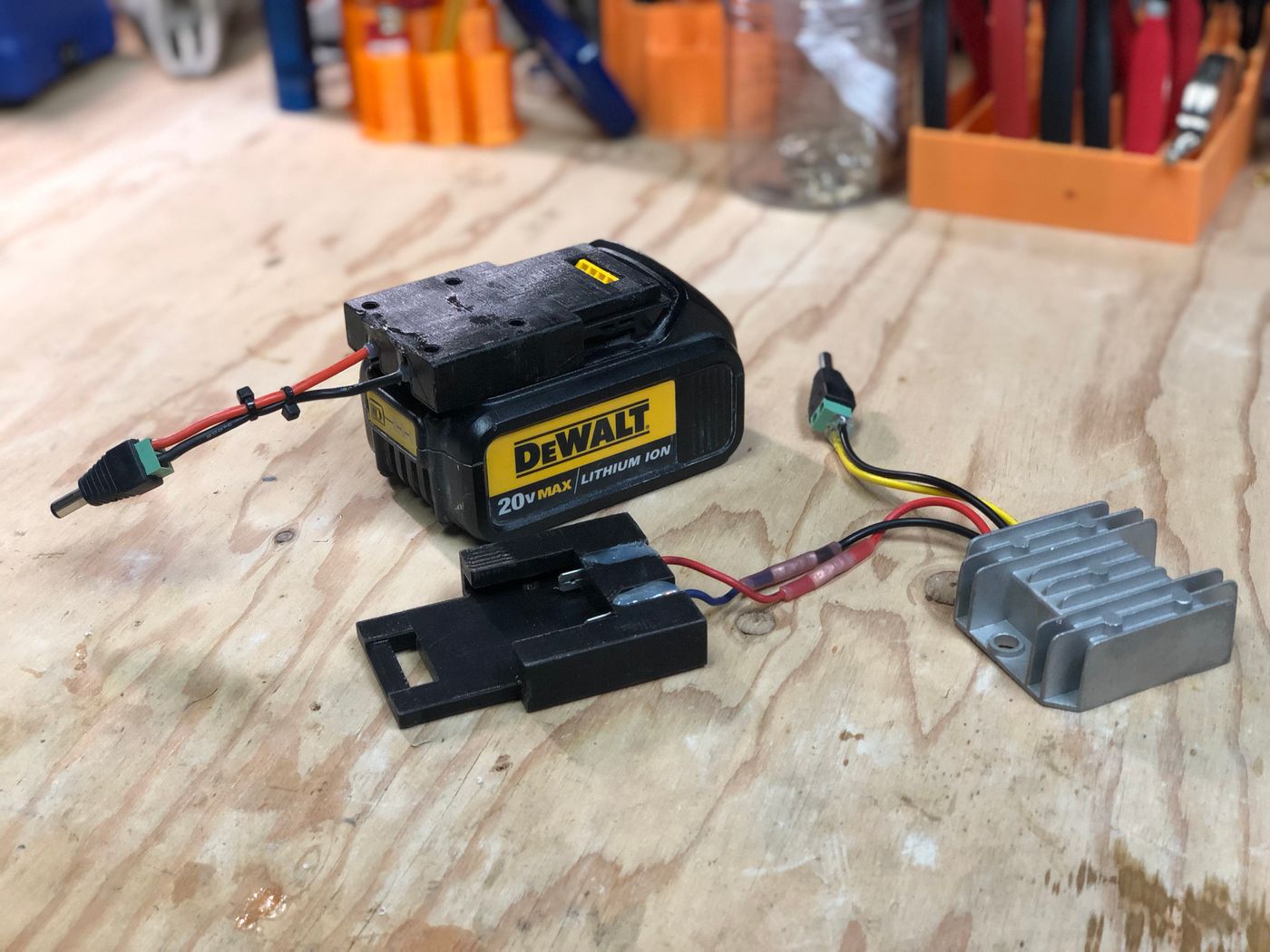DeWalt 20V PowerBrick

Project Summary
With all my work on various LED projects and powering them, I had amassed an small army of wall-warts with various output voltages and amperes. 3.3V, 5V, 12V and so on…
It was all getting a bit ridiculous. And lets not even talk about when I needed portable power.
Unrelated, I’d also been amassing an small collection of DeWalt tools and the beautifully standard 20V battery pack. One day, it just stuck me out of the blue.. why not use those 20V packs as power sources? Those packs have pretty great capacity and 20V shoud cover all my needs with the proper step-downs.
So the first thing I started out doing was to find out just how to pull power from those things. Turns out its pretty simple. The contacts on the left and right ends are what you need to plug in.
Second thing I did was come up with a 3D printed object that could slide and lock into the battery pack.
Using some spade connectors and epoxy glue, I got myself a perfectly serviceable connector!
Current Iterations
The first iteration (left in photo) is a simple straight connection to a 5.5mm barrel jack. This supplies 20V (or less) directly from the source.
The second iteration (right in photo) is a connection to a 20A 5V converter. This supplies 5V power via the 5.5mm barrel jack connector.
Improvements Desired
This power supply is unfused, unregulated and not monitored. Lots of bad things could happen.
I’d like to build an chassis that can contain a low voltage detector to shut off the power when that threshold is reached to avoid damaging the li-ion cells inside the pack.
I’d also like to build a more sosphicated brick that contains adjustable voltage option.